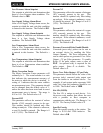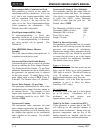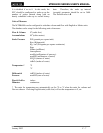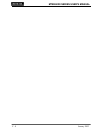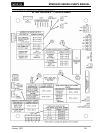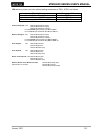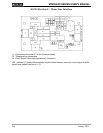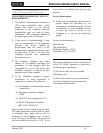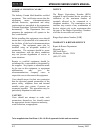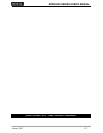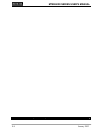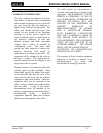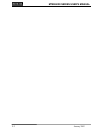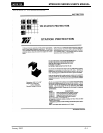
MTEK6000 SERIES USER'S MANUAL
January 2002 E-1
APPENDIX E : Certifications (CSA, UL
and FCC Drawings and Statements
CONSUMER INFORMATION AND FCC
REQUIREMENTS
1. The Federal Communication commission
(FCC) has established rules, which
permits this device to be directly
connected to the telephone network.
Standardized jacks are used for these
connections. This equipment should not
be used on party lines or coin lines.
2. If this device is malfunctioning, it may
also be causing harm to the telephone
network; this device should be
disconnected until the source of the
problem can be determined and unit repair
as been made. If this is not done, the
telephone company may temporarily
disconnect service.
3. The telephone company may make
changes in its technical operations and
procedures. If such changes affect the
compatibility or use of this device, the
telephone company is required to give
adequate notice of the changes.
4. If the telephone company requests
information on what equipment is
connected to its lines, inform them of:
(a) The telephone number that this unit is
connected to
(b) The ringer equivalence number
[0.8B]
(c) The USOC jack required [ RJ11C ]
(d) The FCC Registration Number
BK5 USA-35754-DT-T
Items (b) and (d) are indicated on the label.
The ringer equivalence number (REN) is used
to determine how many devices can be
connected to your telephone line. In most
areas, the sum of the RENs of all devices on
any line should not exceed five (5.0). If too
many devices are attached, they may not ring
properly.
Service Requirement
5. In the event of equipment malfunction, all
repairs should be performed by our
Company or an authorized agent. It is the
responsibility of users requiring services
to report the need for service to our
Company or to one of our authorized
agents.
Service can be obtained at:
Metretek, Inc.
300 North Drive,
Melbourne, Florida 32934
Telephone: (321)-259-9700
This device complies with Part 15 and Part 68
of the FCC Rules. Operation is subjected to
the following two conditions:
[1] This device may not cause harmful
Interference, and
[2] This device must accept any interference
received, including interference that may
cause undesired operations.



